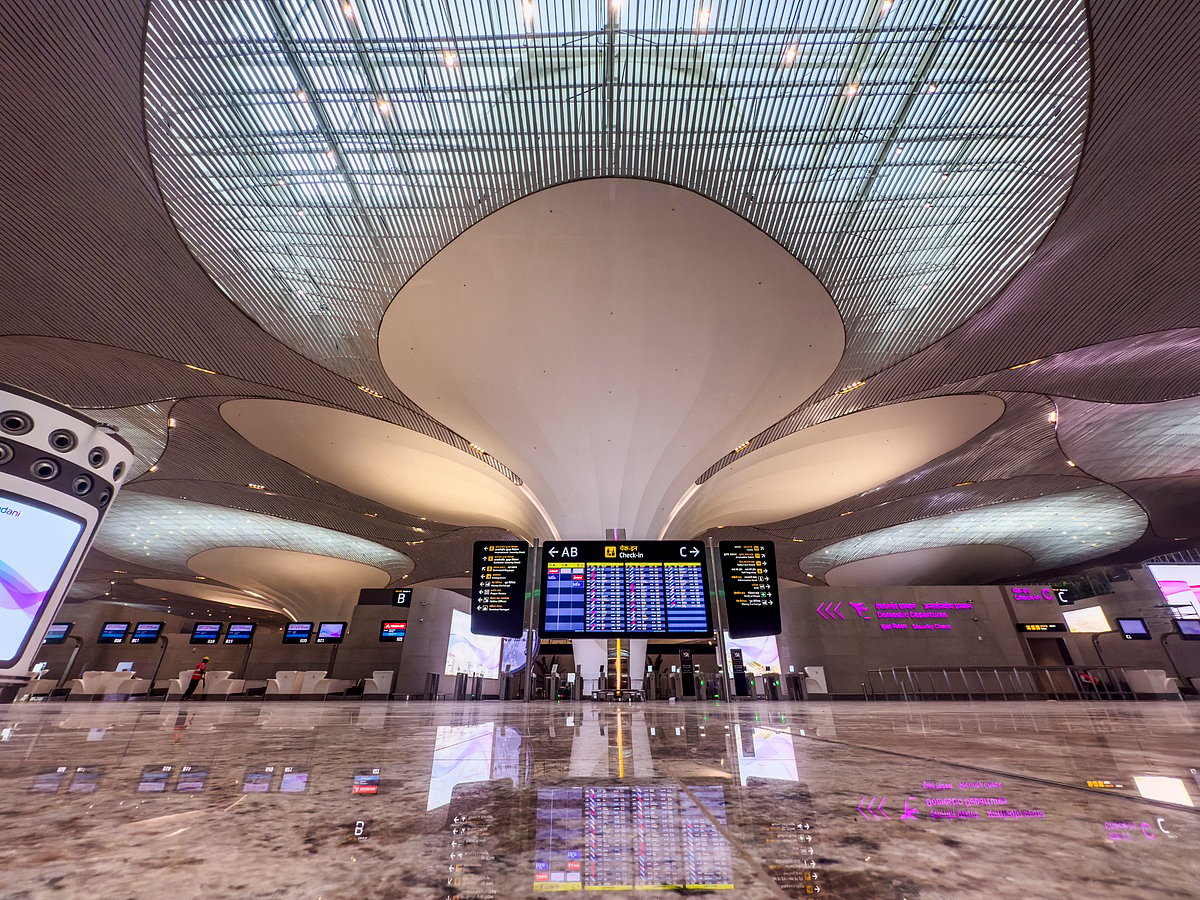Inside Navi Mumbai’s Rs196.5-billion airport: India’s new temple of design and flight
Inside the architecture and ambition driving India’s newest world-class aviation hub

Dubai: Prime Minister Narendra Modi on Tuesday inaugurated the long-awaited Navi Mumbai International Airport (NMIA), calling it a transformative milestone in India’s aviation and infrastructure journey.
The state-of-the-art facility, designed by Zaha Hadid Architects, is expected to strengthen trade, tourism, and connectivity across Mumbai, Pune, and the Konkan region.
“The wait is finally over,” said Maharashtra Chief Minister Devendra Fadnavis on X. “This airport is set to redefine air travel, boost Maharashtra’s growth, and connect India to the world like never before.”
The inauguration ceremony was attended by Civil Aviation Minister Kinjarapu Rammohan Naidu, Union Minister of State for Civil Aviation Murlidhar Mohol, Chief Minister Devendra Fadnavis, and Adani Group Chairman Gautam Adani, who was joined by his son Jeet Adani, Director of Airports at Adani Group.
Modi was given a walkthrough of the terminal before unveiling the plaque that officially marked the opening of India’s most advanced greenfield airport.
A model of public–private partnership
The Navi Mumbai International Airport has been built under a Public-Private Partnership (PPP) between Mumbai International Airport Ltd (MIAL) — a subsidiary of Adani Airports Holdings Ltd — and CIDCO (City and Industrial Development Corporation of Maharashtra Ltd).
Key highlights
Cost: ₹19,650 crore
Model: Public–Private Partnership (MIAL–Adani Airports Holdings Ltd & CIDCO)
Architect: Zaha Hadid Architects, UK
Location: Ulwe, Navi Mumbai
Runway: 3,700 metres
Area: 1,160 hectares
Initial capacity: 20 million passengers annually
Full capacity: 90 million passengers; 3.2 million tonnes cargo
Design theme: Lotus-inspired architecture, energy-efficient, solar-powered systems
Developers: Navi Mumbai International Airport Ltd (NMIAL)
Airlines: IndiGo, Akasa Air, Air India Express (Phase I)
Adani Group Chairman Gautam Adani praised the “collective effort” behind the project, writing on X: “To every hand that worked and every heart that cared — this is your creation.”
Union Minister Murlidhar Mohol described the airport as a project that will “propel Maharashtra to new heights”, adding that it will offer direct access to global markets for industries in Pune, Mumbai, and Konkan.
Architectural and operational marvel
Built at a cost of ₹19,650 crore (₹196.5 billion), the airport is designed by Zaha Hadid Architects (UK), renowned for their futuristic works like Beijing Daxing Airport and London’s Aquatics Centre.
The terminal’s design is inspired by the lotus flower, with petal-shaped rooflines, expansive glass façades, and interiors that harness natural light through lattice jaali screens — merging Indian symbolism with modern sustainability.
The facility will operate alongside Mumbai’s Chhatrapati Shivaji Maharaj International Airport (CSMIA), easing congestion and placing Mumbai among world cities with multi-airport systems like London, Tokyo, and New York.
With a 3,700-metre runway, NMIA is the country’s largest greenfield airport project. Phase I will handle 20 million passengers annually, eventually expanding to 90 million passengers and 3.2 million metric tonnes of cargo per year.
Airlines ready for take-off
Major Indian carriers — including IndiGo, Akasa Air, and Air India Express — have announced plans to begin operations from Navi Mumbai, with initial routes connecting key domestic destinations.
Officials said international flights are expected to follow soon after the airport’s full commissioning phase in 2026.
A gateway to the future
The Navi Mumbai International Airport is not just an infrastructural achievement — it’s a symbol of India’s ambition to match global standards in design, technology, and capacity.
By blending world-class architecture, sustainable innovation, and strategic connectivity, the airport promises to redefine how India takes flight in the decades ahead.
Sign up for the Daily Briefing
Get the latest news and updates straight to your inbox
Network Links
GN StoreDownload our app
© Al Nisr Publishing LLC 2025. All rights reserved.
